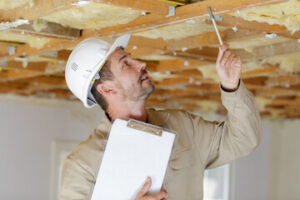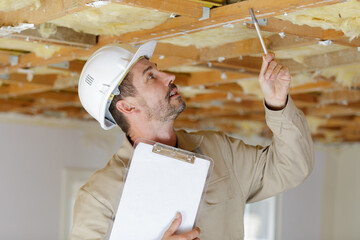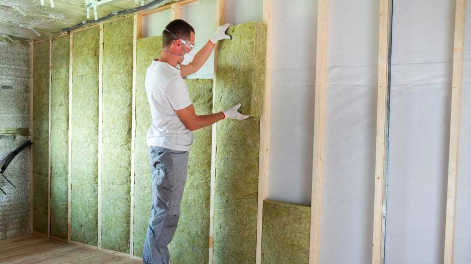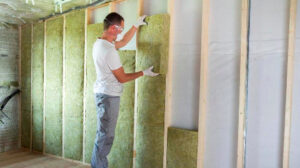Insulation Perth is the protective blanket that envelops your home, slowing heat exchange and reducing energy consumption. It also reduces noise pollution and improves indoor comfort levels.
To make the most of insulation, choose a contractor with an outstanding reputation for professional services. Check their website for reviews and testimonials. Also, verify that they have valid licenses and certifications.
 Insulation Materials
Insulation Materials
Insulation is a key component of any home improvement project that can help lower energy bills. It keeps warm air inside and cold air out, thereby reducing heating and cooling expenses, while at the same time providing a comfortable indoor environment for residents. It also reduces the risk of mold growth in the house, which can cause many health issues including respiratory problems such as asthma and allergies. It is important to understand what types of insulation are available and how they differ from one another so that you can choose the best for your home.
The most common types of insulation include fiberglass, mineral wool (rock or slag wool), and cellulose. The type you choose will depend on your needs and budget. These materials are all made of recycled material and can be found in a variety of forms, including blanket batts or rolls, radiant barriers, and blown-in, and poured foam.
Rigid foam board insulation is an inexpensive form of insulation that can be used for most projects, from exterior walls to attic hatches. It provides high thermal resistance and helps to reduce heat conduction through wood and steel studs. Foam board is generally made of polystyrene, polyisocyanurate, or urethane.
Loose-fill or blown-in insulation consists of loose fibers that are inserted into open cavities. These fibers can be made of recycled paper, plastic, or natural materials like sheep’s wool. They are typically fitted between studs, joists, and beams in a wooden frame at standard spacing, or in a bubble form for retrofitting into existing homes. This type of insulation can be blown in using specialized equipment or, in some cases, poured in.
Cellulose is perhaps the most eco-friendly form of insulation and is available in a range of thicknesses. It has a high fire resistance and can be installed as both closed and open-cell foam. However, it is sensitive to moisture and can rot or develop mold in the presence of water. It is often difficult to find individuals skilled in installing cellulose insulation.
Concrete block and foam boards have cores filled with concrete, which gives them a higher thermal resistance than most other insulating materials. They can only be installed by trained professionals and are suitable for new construction or major renovations.
Installation
Insulation is a vital component of your home or business. If it isn’t installed correctly, you may experience drafts, high energy bills, moisture problems, mildew, and mold. Insulation can last for decades or even a lifetime, so it is important to hire a reputable professional to ensure that your insulation is installed properly.
Professionals will take the time to make sure that your insulation is evenly applied and filled, maximizing its thermal efficiency and comfort. They also know how to seal any gaps or cracks to maximize the benefits of your new insulation.
It is important to look for a licensed, insured, and bonded contractor. Licensing requirements vary by state, but they typically include passing an exam and adhering to certain professional standards. Insured contractors have purchased a bond that covers any financial losses resulting from shoddy work. Bonded contractors are required to disclose any prior insurance claims they have filed to give you peace of mind.
Safety Compliance
Insulation installers often work in confined spaces or at elevated heights. These spaces can be difficult to navigate, which increases the risk of injury or damage. Additionally, many insulation materials contain hazardous chemicals and fibers that can cause health issues if not handled properly. Professional insulation contractors understand the importance of safety and follow strict guidelines for handling these materials.
In addition, insulation contractors must comply with regulations set forth by the Occupational Safety and Health Administration (OSHA) as well as local building codes. By adhering to these guidelines, they can ensure the health and safety of themselves and their clients.
Inexperienced or untrained insulation contractors often focus on the bottom line rather than providing quality service. This can lead to poor installation or using inferior materials that don’t perform as expected. When seeking a professional insulation company, ask for a portfolio of previous projects and references from past customers. This will provide you with a good sense of the company’s dedication to quality and professionalism.
Maintenance
Insulation is more than just stuffing walls; it’s a strategic method of regulating indoor temperature and reducing energy consumption in residential structures. Home insulation services include a variety of expert solutions geared towards maximizing the energy efficiency, comfort, and sustainability of a property.
The implementation of top-tier thermal insulation is a powerful strategy that can dramatically reduce utility costs by up to 40%. With heating and cooling expenses accounting for an average of 54% of household expenditures, this substantial reduction in energy consumption significantly cuts down on the financial burden of a household and helps protect against climate-related damages.
Professional insulation contractors work with a variety of insulating materials, including fiberglass, cellulose, and spray foam, each of which has unique characteristics and applications. These materials are then installed in the attic, walls, and other spaces to prevent the transfer of heat and cold through building structures. Insulation provides a shield against sound pollution, as well.
Aside from improving the energy efficiency and overall comfort of a residence, insulation also increases its resale value. According to the National Association of Realtors, homeowners are seeking homes that feature energy-efficient insulation and other green construction features.
Insulation professionals can assess a property’s energy needs by analyzing the existing insulation levels and conducting an energy audit. They then recommend a tailored plan for installation that meets the homeowner’s energy efficiency goals. They can also repair and replace old or damaged insulation to ensure a high level of performance.
As a homeowner, it is important to keep up with routine maintenance to extend the life of your insulation and protect against moisture-related issues such as mold. Regular inspections should be conducted to identify potential air leaks, gaps, or cracks that could compromise the integrity of your insulation.
Performing these tasks can be time-consuming, but they are critical to the longevity of your insulation. In addition, a regular schedule of cleaning and sweeping can prevent dust from settling and inhibiting the effectiveness of your insulation.
Recommendations
Insulation professionals have the expertise and tools to get the job done right so that you can enjoy the many benefits of a well-insulated home. In addition, they have years of experience with various types of insulation materials and can recommend the best type for your building’s needs based on climate, building design, and budget.
When choosing an insulation contractor, look for companies with a proven track record and a commitment to quality. They should be able to provide you with a portfolio of past jobs and references from satisfied customers. They should also be knowledgeable about local building codes and regulations.
Some types of insulation require special safety procedures, such as handling potentially hazardous materials. Professionals are familiar with these regulations and have the training and equipment to perform the work safely. They can also complete the installation quickly and efficiently, minimizing disruptions to the building’s occupants.
A good insulation company will understand the importance of balanced ventilation and can provide solutions to prevent moisture buildup, which could lead to mold growth and other problems. They will also conduct post-installation assessments to ensure that the insulation is performing as expected.
It can be tempting to take a do-it-yourself approach when it comes to household maintenance tasks, especially those like upgrading or installing spray foam insulation. However, doing it yourself can have serious consequences that can impact your comfort, energy efficiency, and safety. A reputable insulation company will bring expertise, experience, and a commitment to quality, so you can rest assured knowing that the job will be done correctly the first time. With the right insulation, you can enjoy improved comfort and energy savings all year round!


 Insulation removal can be a complex and time-consuming process. It requires special equipment and knowledge to do it properly. This is why many homeowners choose to hire professional insulation removal services. This can save them a lot of time and energy. In addition, it ensures that the job is done correctly and safely.
Insulation removal can be a complex and time-consuming process. It requires special equipment and knowledge to do it properly. This is why many homeowners choose to hire professional insulation removal services. This can save them a lot of time and energy. In addition, it ensures that the job is done correctly and safely.